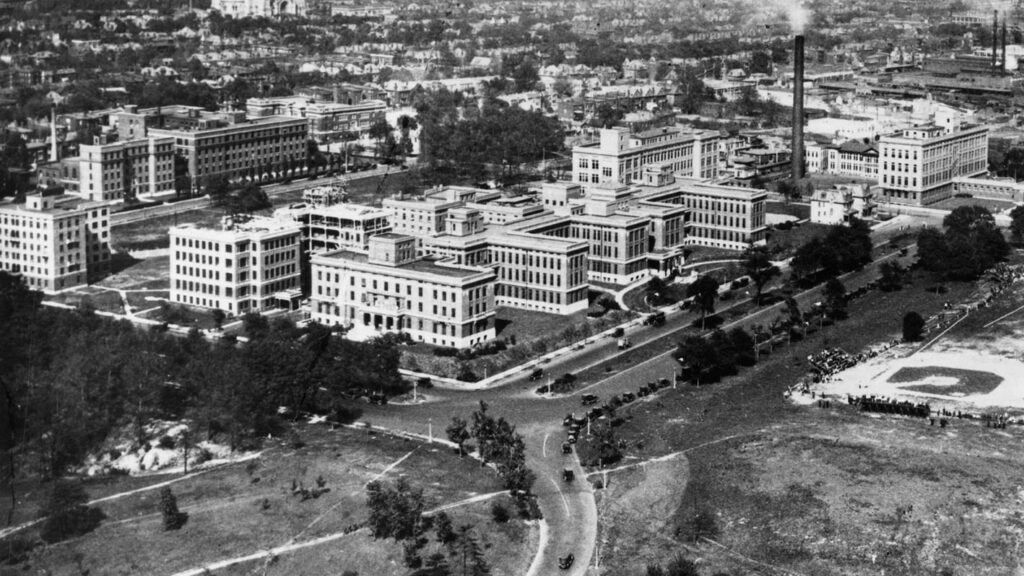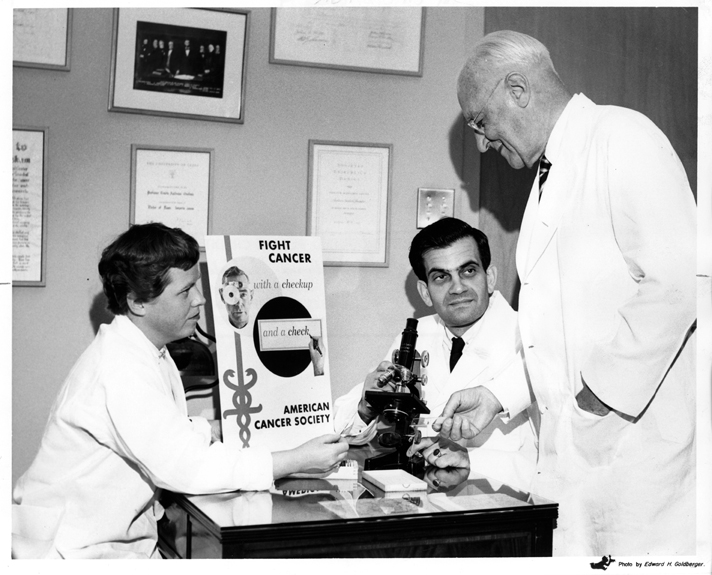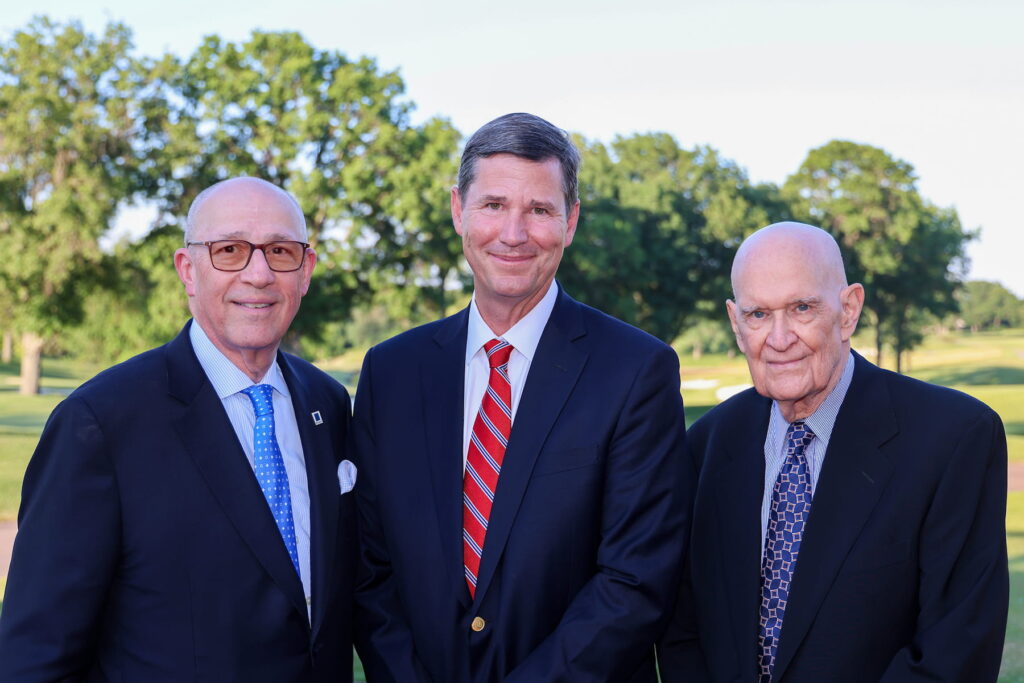A Uniquely Collaborative Environment
Washington University School of Medicine in St. Louis, from its very incarnation, was established with academic excellence at the forefront of its mission. In 1891, at a time when medical training in the United States was in desperate need of improvement, the St. Louis Medical College joined Washington University to found the Medical Department. The Missouri Medical College, which had been in operation since 1840, then joined the Department in 1899, uniting the two oldest medical schools west of the Mississippi River.

From its earliest days, the Department of Surgery fostered an environment centered on innovation and collaboration. In 1910, the school entered into an agreement with Barnes Hospital, which still was in the planning stages, and the existing St. Louis Children’s Hospital to allow students into the wards as clinical clerks. The agreement also gave the school the opportunity to conduct clinical research and appoint staff members at both hospitals.
On the Shoulders of the Giants
The Department’s legacy was built by a long line of renowned surgeons and is continued through our standards of excellence in education today. Fred Murphy, MD, performed the first surgery in Washington University’s Department of Surgery — an appendectomy — in 1914 He went on to bring a surgical group to the front lines of the First World War.

In 1919, Evarts Graham, MD, was appointed as the Department’s first official full-time chair and William K. Bixby Professor. Graham’s career was marked by many outstanding achievements, including the first successful pneumonectomy for cancer in 1933 and the development of cholecystography as a non-invasive way of evaluating the biliary tree. More than 40 of his trainees went on to become department chairs or heads of specialty services. Graham and colleagues contributed groundbreaking research that linked smoking to the rising tide of lung cancer. It was under Graham’s mentorship that a young medical student, Ernest Wynder, MD, investigated and confirmed the correlation in the 1950s.
Graham’s legacy of integrating basic science research and clinical care to create the surgical scientist was continued by later chairs. His successor, Carl Moyer, MD, was appointed as chair in 1951. Moyer was a champion for excellence in training, education and patient care, and set the precedents for Washington University leaders for generations to come.
Moyer was succeeded by Walter Ballinger, MD, in 1967. Ballinger led the department through tumultuous years of growth. During this time, Ballinger advanced our mission to provide superior education to surgical residents, creating opportunities for trainees to complete innovative research in partnerships with the National Institutes of Health. Ballinger was also an early advocate for women and minorities in surgery despite patient care and medical education still being widely segregated.
Samuel Wells Jr., MD, then became the Bixby Professor and chair of the department in 1981. In his 17 years as chairman, he recruited a world-class faculty, emphasized basic and translational research, and placed great emphasis on educating academic leaders in surgery. Wells sought out and recruited national leaders in medicine to the department to build what was considered one of the best in the county.
New Ways of Thinking
Our legacy at Washington University is one of advancing the future of medicine not only in research and education, but in diversity and equity.
Jessie Ternberg, MD, became Washington University’s first woman surgery resident 1954 at a time when opportunities for women in surgery were virtually nonexistent. She went on to become the first woman chief resident and the first woman surgeon at the School of Medicine, thus ushering in a new era for not only the university, but for women in medicine as a whole.
Leaders at Washington University helped to pave the way for underrepresented groups of surgeons and demanded excellence in all areas of training. In partnership with Homer G. Philips Hospital, one of only four hospitals in the country welcoming Black surgeons during segregation, Washington University educators opened doors for surgeons such as LeSalle Leffall, Jr., MD, who went on to become the first Black president of a number of professional organizations, including American College of Surgeons, American Cancer Society and the Society of Surgical Chairs. Leffall, a lifelong advocate for health equity, trained under Moyer and William Sinkler, MD, director of Homer G. Philips Hospital and assistant professor at Washington University School of Medicine.
A Challenge for All of Us
The community is considered a patient itself at Washington University. The Department of Surgery has been actively working to build trust in the St. Louis community since its establishment in order to effectively communicate, educate and listen. The commitment to excellent clinical care extends into care of the individuals throughout the population, and we strive to foster a population of students, trainees and faculty to reflect the vast diversity of the community we serve.
Washington University School of Medicine continues as one of the premier medical schools in the world – consistently ranked among the top 10 research medical schools by U.S.News & World Report.
Our tradition of excellence continued under Timothy J. Eberlein, MD, who served as Bixby Professor and chair of the Department of Surgery, the Spencer T. and Ann W. Olin Distinguished Professor and director of the Siteman Cancer Center and surgeon-in-chief at Barnes-Jewish Hospital. Eberlein received the 2006 Dr. Rodman L. Sheen and Thomas G. Sheen Award, given each year for outstanding contribution to the medical profession. The Sheen award has honored 39 of the foremost members of the nation’s medical community since the beginning in 1968 and was awarded to Eberlein for his instrumental development of the Siteman Cancer Center, which was designated a Comprehensive Cancer Center by the National Cancer Institute in 2005, six years after its inception. Siteman is the only cancer center in Missouri and within a 240-mile radius of St. Louis to hold this prestigious designation. In 2004, Eberlein was elected to the prestigious Institute of Medicine of the National Academy of Sciences, one of the highest honors medical scientists in the United States can receive. In addition, Department of Surgery faculty members, over the past decade, have frequently served as presidents of major medical societies and associations. In 2019, Eberlein and Alvin J. Siteman, whose $35 million donation made the Siteman Cancer Center a reality, were named Citizens of the Year by the St. Louis Post Dispatch. Their partnership founded and fostered the success of the world-renowned cancer center — the only center in Missouri to have earned the Comprehensive Cancer Center designation and an “Exceptional” rating from the National Cancer Institute.

Eberlein’s successor, surgeon-scientist John A. Olson Jr., MD, PhD, was appointed as head of the Department of Surgery and William K. Bixby Professor in 2022. Olson was recruited from the University of Maryland, where he served as Chief of the Division of General and Oncologic surgery. Olson specializes in surgical treatment of diseases in the endocrine glands and the treatment of breast cancer. As an excellent clinician and researcher, he has received multiple NIH grants and recognition for groundbreaking research on the biology and development of parathyroid tumors. Olson himself trained at Washington University in the 1990s. There he completed his postdoctoral research fellowship and was named chief resident in surgery at Barnes Hospital in 1998.